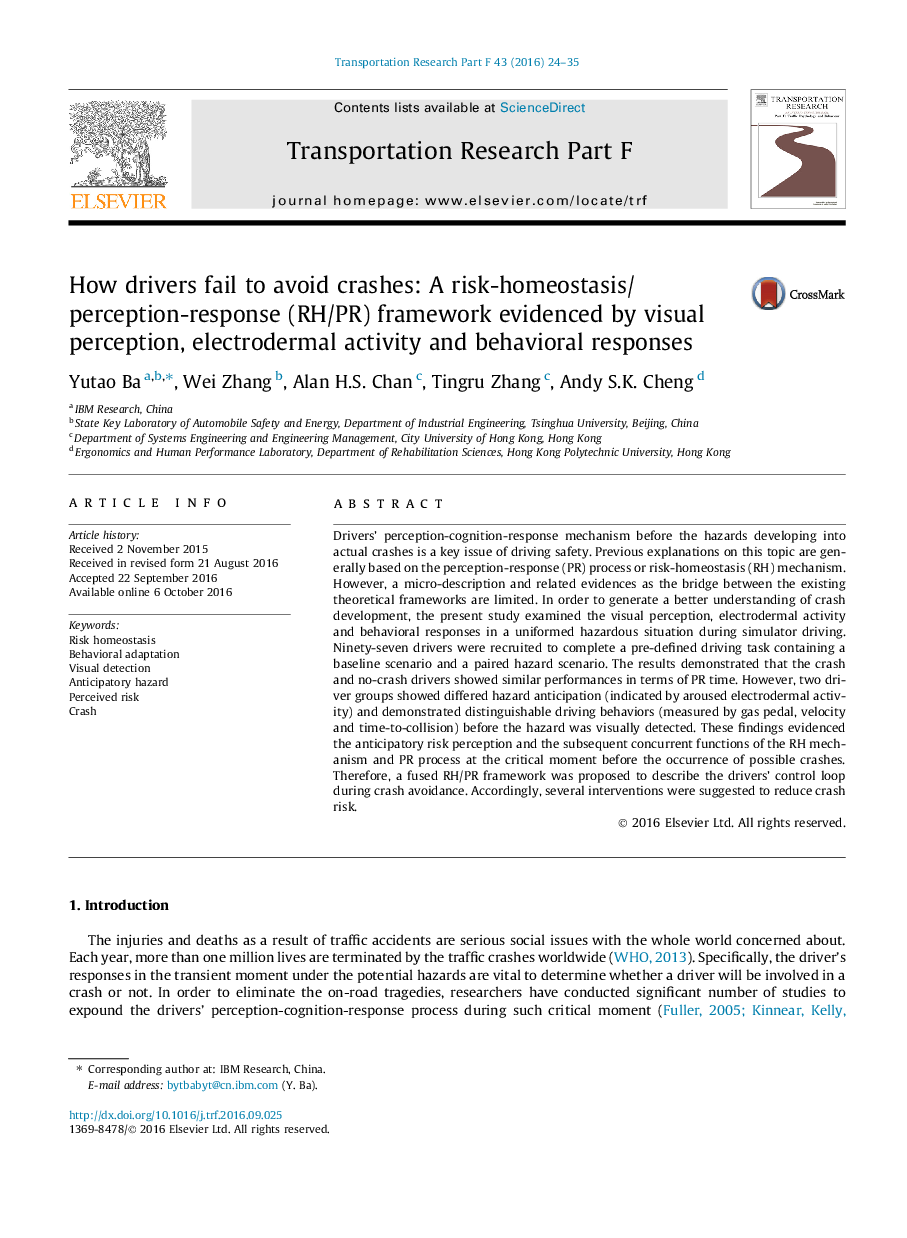| کد مقاله | کد نشریه | سال انتشار | مقاله انگلیسی | نسخه تمام متن |
|---|---|---|---|---|
| 5037470 | 1472442 | 2016 | 12 صفحه PDF | دانلود رایگان |

- The study examined the visual perception, electrodermal activity, and behavioral responses in a hazardous driving situation.
- A risk-homeostasis/perception-response (RH/PR) framework was proposed to describe the drivers' perception-cognition-response loop in hazardous situation.
- During the PR process, no significant difference of time intervals was established between the crash drivers and no-crash drivers either in detection stage or reaction stage.
- The crash drivers and no-crash drivers showed significant differences in terms of hazard anticipation and subsequent behavioral adaptation, which suggested the RH mechanism before the PR process.
Drivers' perception-cognition-response mechanism before the hazards developing into actual crashes is a key issue of driving safety. Previous explanations on this topic are generally based on the perception-response (PR) process or risk-homeostasis (RH) mechanism. However, a micro-description and related evidences as the bridge between the existing theoretical frameworks are limited. In order to generate a better understanding of crash development, the present study examined the visual perception, electrodermal activity and behavioral responses in a uniformed hazardous situation during simulator driving. Ninety-seven drivers were recruited to complete a pre-defined driving task containing a baseline scenario and a paired hazard scenario. The results demonstrated that the crash and no-crash drivers showed similar performances in terms of PR time. However, two driver groups showed differed hazard anticipation (indicated by aroused electrodermal activity) and demonstrated distinguishable driving behaviors (measured by gas pedal, velocity and time-to-collision) before the hazard was visually detected. These findings evidenced the anticipatory risk perception and the subsequent concurrent functions of the RH mechanism and PR process at the critical moment before the occurrence of possible crashes. Therefore, a fused RH/PR framework was proposed to describe the drivers' control loop during crash avoidance. Accordingly, several interventions were suggested to reduce crash risk.
Journal: Transportation Research Part F: Traffic Psychology and Behaviour - Volume 43, November 2016, Pages 24-35